YouTube Video
Click to view this content.
Hi everybody! This time, I would create another 2D post-processing filter that could be useful if, for example, we want to display a newspaper article with a color image in our game, which should look like it was printed on an inkjet printer. In other words, we'll convert the image into a four-color raster in CMYK coding.
YouTube Video
Click to view this content.
Hello everyone! This time, let's try something really simple. I didn't have time for anything more complicated because we're right in the middle of releasing our game, which is quite a time-consuming activity. But who knows, even a simple effect can end up being useful. Let's take a look at how we can implement such a digital burn.
YouTube Video
Click to view this content.
Hello everyone! We already have one rain shader, so why not add another one? This time it will be based on a slightly more complex algorithm, but it will allow for much more customization and won't suffer from visual artifacts. Let's get to it.
YouTube Video
Click to view this content.
Hi everyone! As I promised at the end of the video on advanced post-processing, I'm returning to this technology once again, and this time we'll use it for an alternative method to detect edges in our 3D scene. The result will be an effect that resembles a pencil drawing on paper, which can be a very interesting enhancement for your game. Let's take a look at how something like this works.
YouTube Video
Click to view this content.
Hi everybody! A few months ago, I created a tutorial for generating a simple two-dimensional grid, and recently I thought it would definitely be useful if we could do the same as a projection into the third dimension. The algorithm for the grid itself will remain the same, but we will add elements like a 3D camera, projected UVs, and so on. Let's take a look at how such a shader works.
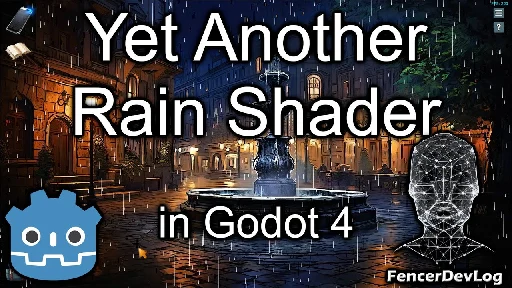
YouTube Video
Click to view this content.
Hey everybody! Would you like an inexpensive rain effect to enhance the 2D scenes in your game? We already have the particle rain, which I demonstrated in one of the previous videos. What I'll show today might not be perfect, but the shader itself is very fast, so it can be easily used, for example, to decorate windows through which you can see a rain-soaked landscape. Or even for an entire scene, if we manage to set the parameters correctly.
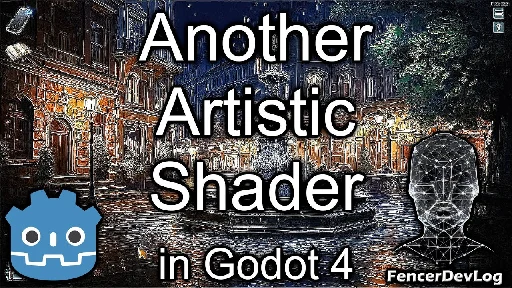
YouTube Video
Click to view this content.
Hi everyone! Let’s try to write another shader to enhance our graphics, for example, the background of a scene in a game. I recently made a video about the emboss filter, which is quite similar to the effect I want to implement today, but this time I'll show a shader that may not look as flashy, but can be written in one line and certainly has other good qualities.
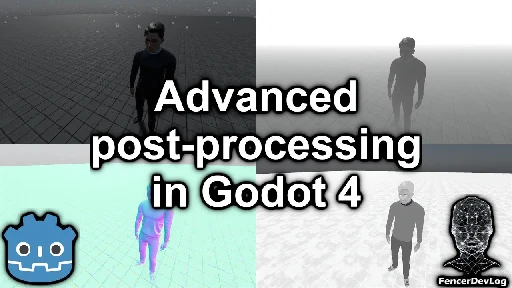
YouTube Video
Click to view this content.
One of the topics I covered in the new book of shaders is advanced post-processing, which will be the subject of today's video.
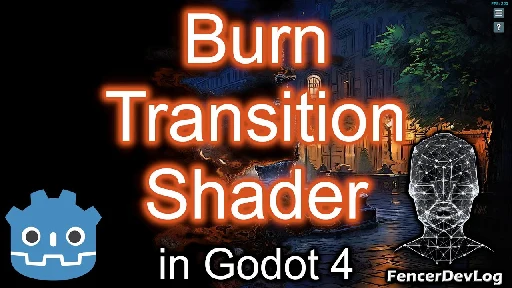
YouTube Video
Click to view this content.
Hi everyone! If you watched the video about the simple transition between images using a noise texture, you surely noticed how we used a simple algorithm for a rather impressive effect. Now let's try something a bit different - instead of a regular transition, we'll create a burning effect for our scene, which will be a somewhat more complex algorithm. Let's do it.

Learn how to enhance your game’s graphics with impressive visual effects!
This book provides a detailed guide on creating 30 spectacular shaders in Godot 4, including thorough explanations of their algorithms and parameter settings. Each example comes with complete source code that you can use in your projects without restrictions.
So, how can you get it?
Please visit Shaders in Godot 4: Add stunning visual effects to your games for more information and a free sample (50 pages out of 310).
Thank you for reading this. Good luck with your games. 😎

Learn how to enhance your game’s graphics with impressive visual effects!
This book provides a detailed guide on creating 30 spectacular shaders in Godot 4, including thorough explanations of their algorithms and parameter settings. Each example comes with complete source code that you can use in your projects without restrictions.
So, how can you get it?
Please visit Shaders in Godot 4: Add stunning visual effects to your games for more information and a free sample (50 pages out of 310).
Thank you for reading this. Good luck with your games. 😎
Assemble your objects from smaller, independent 3D meshes, which you can control separately after destroying an enemy. That's how I do it in my space shooter game.
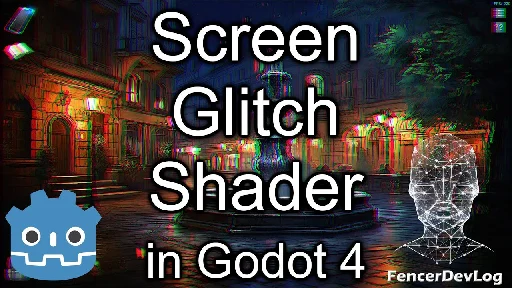
YouTube Video
Click to view this content.
Hi everyone! Recently, I returned to the algorithm we used for generating the lightning effect and tried to apply it in a slightly different way. Essentially, it involves decomposing the texture into individual color components - red, green, and blue - and shifting them according to a pseudo-chaotic value. I think I've seen something similar in a few games, and maybe such an effect will be useful for your project too. So let's get to it.
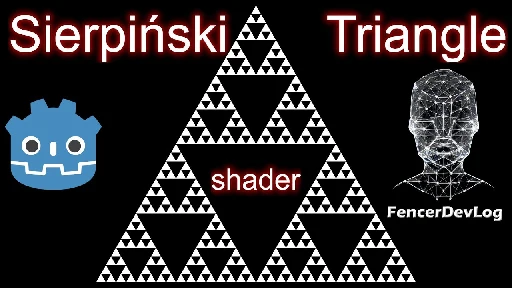
YouTube Video
Click to view this content.
Hi everybody! This time I would like to try something really simple. It is one of the simplest fractals that you have probably seen before, and it is called the Sierpiński triangle. This code can demonstrate simple transformations and also model the resulting effect by removing pixels in each iteration. So let's get started.
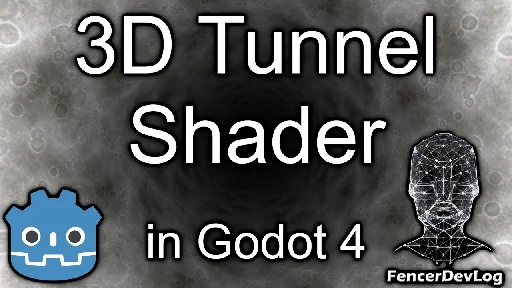
YouTube Video
Click to view this content.
Hi everyone! This time I would try something in 3D. It will be quite a simple thing, namely creating a tunnel from a texture, but even something as basic as that can sometimes be useful. And who knows, maybe I'll like it and next time I'll make something more sophisticated. So let's get started.
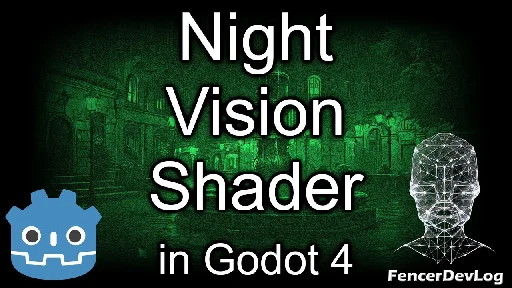
YouTube Video
Click to view this content.
Hi everybody! During the development of our point-and-click adventure game Whispers of Prague, we played around with the idea of creating some scenes in complete darkness, so the main character would need to acquire night vision goggles to navigate the scene. This idea was eventually discarded, but the effect itself isn't entirely bad, as you can see right now. Let's take a look at how such a shader works.
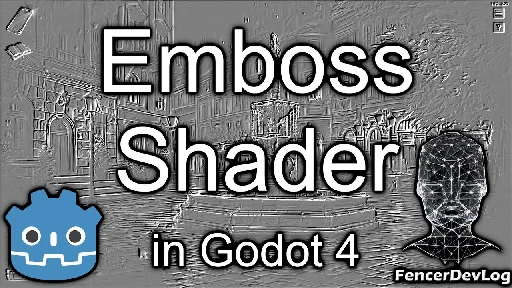
YouTube Video
Click to view this content.
Hi everyone! Do you remember the Sobel operator that I used in one of the previous videos for edge detection? The shader that I will demonstrate today will be based on a similar principle, and its result will be an equally interesting effect. Let's take a look at how the algorithm for the emboss filter works and how to implement it as a shader.
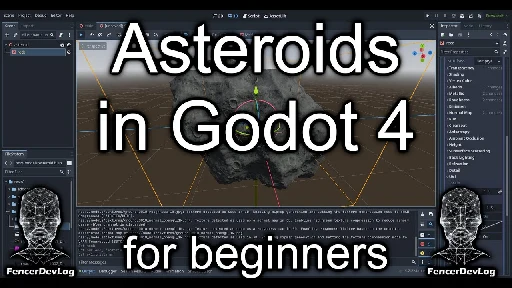
YouTube Video
Click to view this content.
Hi everybody. This is the second part of the mini-tutorial on creating 3D asteroids or other rocks in Blender and using them in Godot Engine. This time, I will focus on the Godot Engine, namely importing an already finished model into Godot and resolving subsequent issues. If you're interested in the modeling itself, I recommend watching the first part first. Now, let's dive into Godot.
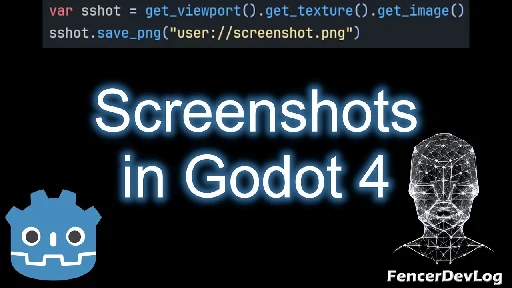
YouTube Video
Click to view this content.
Hi everybody! Would you like to know how to easily create a screenshot in your game using the Godot Engine, whether it's a 2D or 3D game? In this short video, I'll show you how.
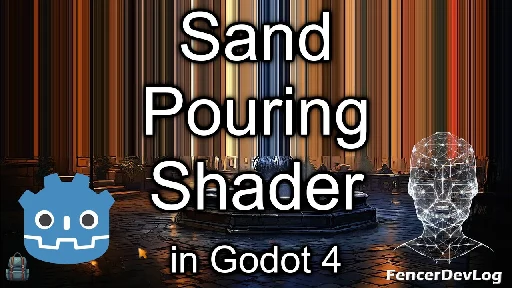
YouTube Video
Click to view this content.
Hi everybody! I know I often say "Let's make a quick video about a simple effect" and then I usually end up talking about it for over 20 minutes. But this time I hope I'll finally manage to make a shorter video because today's effect is really easy, as you can see in the background.
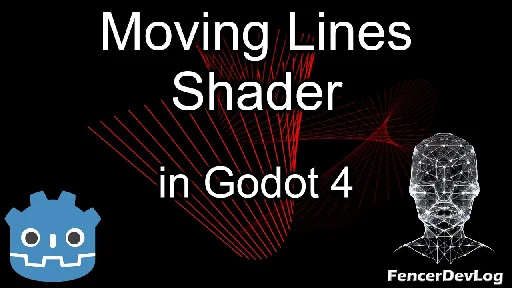
YouTube Video
Click to view this content.
Hi everyone! I always wanted to create this kind of effect with running lines, but I didn't know how to do it before. Now I finally know, and since it's a relatively simple algorithm, this video won't be extremely long either. Let's start with the tutorial.
Well, Godot is a lightweight engine, so it doesn't have almost anything extra built-in. Which is advantageous because the engine itself then takes up negligible space on disk and the editor starts up within seconds, which can't be said for Unreal. But everyone prefers something different, of course. I mainly wanted to show that implementing your own blur effect can be simpler than it might seem at first glance.
If you want to learn about Godot shaders, you can try these video tutorials.
Thank you! 😎
I think that section is just automatically fetched from the YouTube video description, and ignores line breaks. Here's the correct URL: https://filiprachunek.gumroad.com/l/godot4